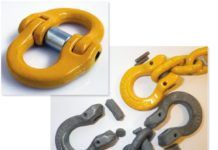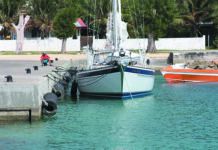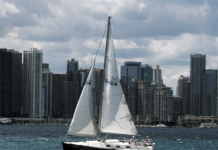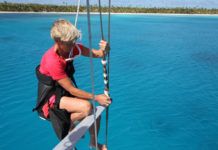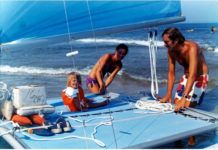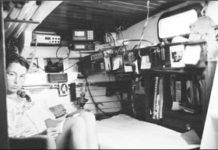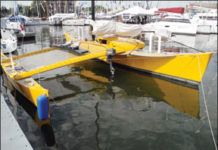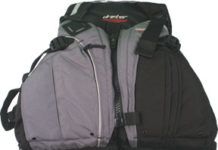Find More PS Online
Practical Sailor is working on updating some used boat reviews and adding some new ones to our online library, and we need your help. Were looking for opinions (and photos) from current or former owners of the following boats: Cabo Rico 38, Com-Pac 35, Cheoy Lee Clipper 42, Stuart Knockabout, Express 37, and CSY 37.
Carl Alberg’s Timeless Designs
Wed tucked into Hatchet Bay, Eleuthera, when the pretty green sloop sailed through the narrow slot into the basin. A ballsy kid, he didnt even furl the jib. I can't recall his name. He was in his 20s-handy with tools and a brush. The boats coamings gleamed with nine layers of varnish. The boat, I remember well. It was the first time I got a really close look at an Alberg 30. She was, in many ways, the sort of sailboat an elementary school artist might render, if you asked him to draw a sailboat. Deceptively simple. Elegant and well-balanced.
Hobie Alter, Cheryl Tiegs and a Yard Full of Hobie Cats
Hobie asked: Are you near Norfolk or New York?, and I said no to both. He then paused and said: I could sell you one, but if you buy three boats you can be our dealer in that area. . . . My wife was not too pleased with 140 cardboard boxes (each box holding a hull) in our backyard. She had just given birth to our first child three months earlier!
Deck, Hull-to-deck Joint, and Keel Merit a Close Look
As is typical of C&Cs, owners give the boat high marks for quality of construction, and in general, their enthusiasm is justified. The boat does, however, have a potential weak point. Hull: Like most C&Cs, the 40 was built with a balsa-cored hull. The result is a hull that is extremely stiff for its weight, but balsa coring is not without its potential for problems. In the event of delamination or rupture of the hull skin, the balsa coring can absorb moisture. Moisture penetration of the outer laminate could ultimately reach the balsa coring. It is imperative that a balsa-cored hull be carefully examined by a knowledgeable surveyor before purchasing a used boat.
BJ40: A Well-designed and Well-built Racer-Cruiser
The fiber-to-resin ratio was increased through a vacuum-assisted resin infusion, a process that better wets out the laminate and simultaneously squeezes out all the excess resin. The mechanical properties and blister resistance of vinylester resin are better than its polyester cousin, and this uptick in materials and laminating process dovetailed with the use of Divinycell foam to deliver a strong, stiff, one-piece hull with a an inward-turning flange. The BJ40 hull carries a 10-year warranty against osmotic blistering.
Used Boat Review: LM32 Pilothouse Sloop
Danish company LM (Lunderskov Mbelfabrik) began as a wood furniture maker in 1940. In the 1950s, the company incorporated the newfangled fiberglass into their furniture, and in 1972, the company built its first fiberglass sailboat, the LM27. Over the next 20 years, it built 3,000 boats in five models, ranging from 24 to 32 feet. All LM models share a similar look-canoe-stern hulls with a pilothouse ahead of a sizable cockpit. All are mast-head rigged sloops, and every owner we talked to said that the boats sailed better than they expected-an experience that we shared on our test sail of the LM32.
Financing Good Ole Boats
Here is a question that has puzzled me for a long time. Many financial institutions offer financing on mature vessels but have a boat age limit of 15 to 20 years. But, if a 1978 classic-plastic boat underwent a major refit in, say 1999, does that make the boat a 1999 in the eyes of the financiers? Id like to hear tales on how others may have gotten around this rule.
All is Lost and Found
A photographer friend stumbled upon this photo of my wife, Theresa, from our cruising days. It was taken in Fiji around 1995. She doesn't usually look this serious; it probably had something to do with having two guests on board a cramped 32-foot Atkin ketch for a couple of weeks. I thought the image illustrated well something that Ive been thinking about lately: the value of resourcefulness while cruising. This notion of the self-sufficient sailor came to mind most recently while watching the movie trailer for All is Lost, in which a single-handed sailor (played by Robert Redford) tries to keep his beloved Cal 29 afloat.
Multihulls for the Masses
With the Americas Cup immersed in multihull-mania and brimming with a controversy over the safety implications of too much speed, we decided to take a look at performance multihulls for recreational sailors. We split the test field into the latest iteration of beach-launching cats and tris, and a second fleet of trailerable multihulls. The boat test compared the Hobie Getaway, Windrider 17, Weta 14, Searail 19, Corsair Sprint 750 MkII, Motive 25R, and a proa kit boat from Chesapeake Light Craft.
Life Jackets for Active, Racing Sailors
For this test, we rounded up seven flotation aids from four manufacturers: Float Tech, Gill, Spinlock, and Stohlquist. The test field included an inflatable rash guard, foam racing-style life vests, inflatable PFD-harness combinations, and PFDs designed specifically for women. Only the Stohlquist PFDs meet U.S. Coast Guard standards, but all have innovative features and offer increased comfort and mobility over many Type I and Type II PFDs.











